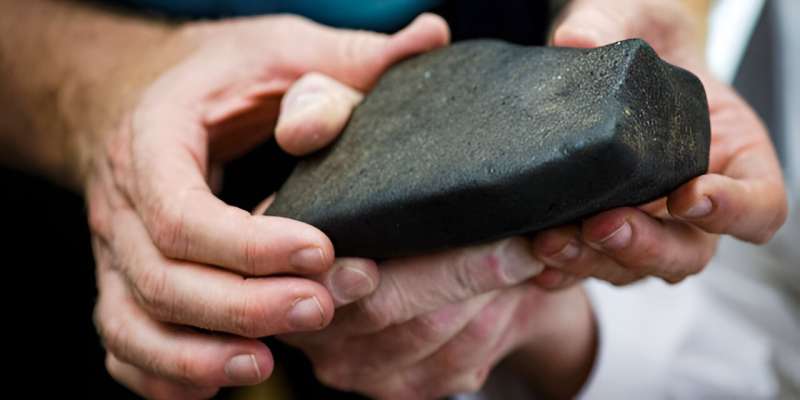This article has been reviewed according to Science X's editorial process and policies. Editors have highlighted the following attributes while ensuring the content's credibility:
fact-checked
trusted source
proofread
'Space junk' that fell in Eastern Cape was a car-size meteorite

The "space junk" that fell over the Eastern Cape on Sunday morning was a meteorite.
Scientists from Wits University and NMMU have closely monitored the event, including media and online reports of so-called "space debris" that entered the Earth's atmosphere between 8:30 and 9 am on Sunday morning.
Eyewitnesses saw, and some took videos of, a streak of bright light in the sky over St Francis Bay. What some speculated might be space junk from a satellite seems to have entered the atmosphere at a relatively low trajectory, breaking up as it burnt up. The captain of a whale-watching boat reported seeing objects splashing into the ocean off Cape St Francis.
However, says Professor Roger Gibson from the Wits School of Geosciences, "Based on scientific assessment, the incident is consistent with a rocky asteroid about the size of a car entering Earth's atmosphere at very high speed. Friction with the atmosphere created a spectacular fireball and caused it to break up in flight."
He added, "We have reports that someone has found several fragments of a meteorite near Kirkwood in the Eastern Cape, over 100 km from Cape St Francis. This may indicate an exceptional fall area."
Wits University is one of a few internationally-accredited repositories for meteorites in South Africa. Gibson and his colleagues keep a close watch on meteorite finds and falls in the country. The last meteor fall in South Africa occurred in Lichtenburg in 1973.
"Meteorites are rare and hold deep scientific value as they give us a glimpse of the make-up and birth of our solar system, so it is extremely important for us to track, trace and find possible meteorites that may have fallen in our country," says Gibson. "The way they interact with Earth's atmosphere is also important as they pose a potential threat."
Only 51 meteorites have been documented in South Africa, and only 22 meteorite falls have been recorded. Just like fossils, meteorites are items of national heritage and the sale and trade of meteorites are regulated by law through the South African Heritage Resources Act.
Gibson and Wits colleagues Professor Lew Ashwal and Dr. Leo Vonopartis, together with Dr. Carla Dodd from the Department of Geosciences at NMMU, are extremely interested to learn more about Sunday's meteorite fall, and invite anybody who has seen, heard or found anything that they may suspect of being related to the meteorite event to contact them.
"Some people heard its sonic boom as far away as Plettenberg bay—over 200 km from Gqberha; others felt ground tremors caused by the sonic boom, or actually saw the meteor. We would be extremely interested to hear from any witnesses of this event," says Gibson.
"This is a perfect opportunity for people to become involved in citizen science. We want to know what people saw or heard so that we can piece together the meteor's trajectory, and also if anyone thinks they have found any meteorite fragments. We would like people to record their perceptions and contact us to tell their stories."
To the untrained eye, meteorites can look like normal rocks. However, they should have a smooth, glassy black appearance—called the fusion crust—that is formed from the burning of the meteorite as it enters the atmosphere. Many attract a magnet. The inside of the meteorite will look like a normal rock.
Should pieces of meteorite be found, people should be careful not to destroy or damage them.
"Before you touch it, photograph it on the ground and take several photographs of its environment. Record a GPS pin of where you found it, wrap it in a piece of aluminum foil and place it securely in a zip-lock bag, then contact us to collect it. All of this provides vital scientific information," says Vonopartis.
Provided by Wits University





















